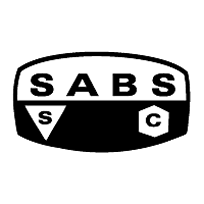Saefty Tips
Common hazards to look for include:
- Checking for visible electrical problems such as worn electrical cords, outlets, and broken appliances.
- Properly identifying flammable liquids and storage of combustible materials. Do not store flammable liquid, such as gasoline, in your room, apartment, or anywhere else inside your building. The vapors from flammable liquids can ignite even at temperatures below zero. Use extreme caution!
- Ensuring that you do not smoke in bed! Smoking is the #1 cause of all fatal room/apartment fires. Someone smoking in bed causes one third of fires related to smoking. Keep large ashtrays handy for smoker to use.
- Checking behind furniture and cushions for dropped matches or cigarettes. Other smoking fires start when a cigarette is dropped in upholstered furniture; smoldering butts are thrown in waste paper baskets; or by other careless accidents. Be careful with smoking materials.
- Checking heating equipment (space heaters, stoves, irons, etc). Fires start when people leave combustibles, such as paper or clothing, too close to heaters or stoves. Improper use of space heaters can also lead to fire.
- Checking your smoke detectors. Fires at night are less likely to be detected because people are sleeping. Most residential fires occur at night when rooms, apartments or lounges are most heavily populated. Smoke detectors are your best defense against fires that occur at night.
- Checking the amount of trash accumulation and clutter in each room, hallways, attic, cellar, and stairwells/landings. Poor housekeeping leads to accumulation of material that will fuel a fire. It also creates blockages in pathways that would otherwise provide safe passage away from the fire.
BE PREPARED AND PLAN AHEAD
Meet with Res Siren to be familiar with the fire safety plans for your department. Invite the fire Marshal to help you out. Ask him to check the building for fire hazards and advise you on fire prevention and escape planning.
As part of your plan, explore your building. Know every possible exit from your office, classrooms, Library, and computer rooms. If hallways become smoky in a fire, your memory can help you find a way out. Remember never to use elevators in a fire. Keep exits and stairwell doors closed at all times, but not locked. Keep exits clear of debris and storage.
Be concerned for fire safety by being sure your building does not exceed the maximum allowed number of people for that building or meeting room particularly during special events/parties. If you don’t know what the occupancy load is for the building or meeting room, your Fire Marshal can tell you.
Give him a call at Tel: +27 31 506 1308
Fire Protection Systems
Smoke detectors and fire alarm systems immediately alert you to fire so that you can get out of the building safely. If your building has a fire alarm system, learn to recognize the sound of the alarm. Know where the alarms are located in your building and how to operate them in an emergency. Smoke detectors are installed throughout your building. Additional smoke detectors for early warning have also been placed in special areas, such as boiler rooms, hallways, exits, etc. If a fire starts while you are asleep, smoke detectors will sound to wake you up before it is too late.
Building occupants need to observe the locations of emergency exits, exit signs, fire alarm system pull stations, and portable fire extinguishers. Do not obstruct exits and fire doors, fire alarm stations, or fire extinguishers! And remember, if the fire is too large for the portable fire extinguisher, you must evacuate the building.
ESCAPE PLAN
In a fire, you really don’t have time to stop and think. Your response needs to be instinctive. That’s why it’s important that you know in advance the two quickest, safe exits out of your room, apartment, and building. It is also critical that you make and practice escape plans, which is why we hold planned fire drills every year. Unless you have been given advanced notice of planned tests of the fire detection system, you should treat all other alarms as REAL and evacuate the area.
Once you have mapped an evacuation plan, decide on a meeting place outdoors, go there as soon as you exit the building and stay there. This way, you can keep track of who is out and who may be trapped inside. If you think someone is trapped, tell the fire department. DO NOT GO BACK IN THE BUILDING YOURSELF!
FIRE HAZARDS CHECKLIST
Look for and check the following fire hazards:
- Flammable materials are stored outdoors
- Appliances and their cords are in good condition (not frayed, not exposed wires)
- Where needed, only multi-outlet power cords w/ an integral surge protector are used.
- Electrical cords are not run under rugs or in areas of high traffic.
- Housekeeping is good. There is no accumulation of burnable trash in exit ways or hallways.
- Smoke detectors are working.
- Exits are not blocked.
- The escape plan is posted in a place where everyone can see it.
- Police, Emergency Rescue and the Fire Department phone numbers are posted by the phone.
- The fireplace has a screen.




